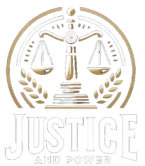Ottawa’s city council unanimously backs a national initiative to outlaw Nazi-era symbols, lending official support to B’nai Brith Canada’s campaign. The motion urges federal leaders to ban hateful imagery such as the Hakenkreuz.
The Ottawa City Council has voted unanimously in favor of supporting a federal initiative aimed at outlawing symbols associated with the Nazi regime throughout Canada, CTV News reported on Wednesday.
The motion, brought forward on Wednesday by College Ward Councillor Laine Johnson, aligns the Canadian capital with B’nai Brith Canada’s campaign advocating for a legislative ban on Nazi iconography.
The campaign specifically highlights the Hakenkreuz—commonly mistaken for the swastika—as a symbol of hatred and fear that should be prohibited from public spaces.
Mayor Mark Sutcliffe seconded the motion, which also includes a directive for the city clerk to send letters to the Prime Minister, the Minister of Justice, and Ottawa-area Members of Parliament. The communication will express municipal backing for the initiative and call on the Federation of Canadian Municipalities to issue its own endorsement.
Councillor Johnson emphasized the broader implications of unchecked hate symbols, noting an increase in casual displays of Nazi imagery.
“Nazi symbols are appearing on protest signs, on vehicles, and worn on clothing and I remain concerned that this is becoming almost casual in its use, and it really instills fear and despair in the hearts of Jewish people,” she said, according to CTV News. “Whenever we see people opposing inclusivity, tolerance, and acceptance, we see Nazi symbols.”
According to data from the Ottawa Police Service, 467 hate- and bias-motivated incidents were recorded in 2024—a slight decline from the previous year. Nevertheless, Jewish residents remained the most frequently targeted community, with 113 reported cases.
Johnson also clarified the significance of language used in the motion, particularly around the term “swastika.”
“We’re avoiding using the word swastika because it is actually a Sanskrit word describing a symbol of peace, used by many southeast Asian communities for millennia, and often this can be confused,” she explained. “Understanding the difference between the swastika and what is known as the Nazi hooked cross or Hakenkreuz is part of the reason why several southeast Asian communities and organizations are supporting the B’nai Brith Canada campaign.”
While Canada currently lacks a formal ban on Nazi imagery, similar laws are in effect across several jurisdictions worldwide, including Germany, Austria, Brazil, and Israel. In Canada, crimes involving the promotion of hatred or antisemitism fall under existing provisions in the Criminal Code.
B’nai Brith Canada welcomed the council’s decision, which follows similar moves by the Province of Saskatchewan and Durham Regional Council.
“We commend Ottawa City Council for passing a motion that clearly stands for Canadian values,” said Richard Robertson, B’nai Brith Canada’s Director of Research and Advocacy. “There is no place for the Hakenkreuz and other symbols of the Third Reich in our public sphere. They are symbols of evil and representative of the worst of humanity.”





